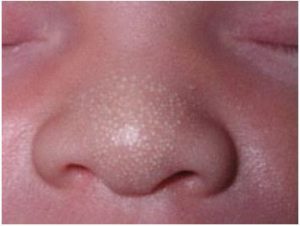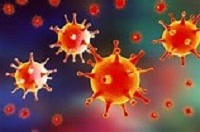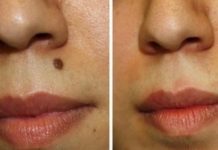WHAT IS MILIA?
Milia is a kind of duct of Keratin that has been trapped under the skin as the dry skin did not shed out on time.
WHAT CAUSES MILIA?
The skin cells that do not shed out on time break inside the skin and release the Keratin to form tiny spots of Milia. They resemble milk-filled tiny sacs and so are also called Milk Spots.
It resembles small pimples filled with pus on the genital parts of the body. They appear in clusters of tiny dots that are white or yellow in colour. Some of them appear in flesh colour too.
ARE MILIA DANGEROUS?
As such Milia are not dangerous and have low risk factors. But when it is on the eyelid or around the eyes it is better to avoid doing anything by ourselves but to go to an expert or practitioner and take proper treatment or removal procedures. Here at Perfection Cosmetic Clinic, Bolton, you will get the right advice from an expert for the same.
WHO IS PRONE TO GET MILIA?

Generally, newborn babies or neonatal are affected by Milia as the old skin may not have shed properly. But this goes off in a few weeks as the baby grows. Milia also can be seen in adults or children, who have undergone the trauma of fire or injury, or due to any allergic condition caused by any kind of medicines or creams applied on the face or any other parts of the body. It is also seen in people who do cosmetic surgeries.
WHAT ARE THE DIFFERENT TYPES OF MILIA?
Milia are of different kinds. They are seen in people of different ages accordingly. Majorly we see four to five types of Milia. They are Neonatal Milia, Primary Milia, Multiple Eruptive Milia, Milia En Plaque, and Traumatic Milia.
NEONATAL MILIA: This type of Milia is seen in newborns. They are found on the face especially around the eyes, inside the mouth, and on the nose. They may also appear on the scalp or upper trunk of the body of the neonatal.
These are distinguished from baby acne by noticing the color and uniformity. The acne turns red whereas Milia does not change the colour or size. Milia is often seen from birth but acne may appear in later stages only. These may disappear by themselves in a few months as the old skin of the baby sheds off giving way to the new skin.
PRIMARY MILIA: This type of Milia is seen in both children and adults. They are seen on a person’s cheek, forehead, eyelids, nasal creases, or even the genital organs. These may need treatment for a speedy recovery, or else it may take months to subside. You can take expert advice at Perfection Cosmetic Clinic, Manchester, and get relief from this problem.
MULTIPLE ERUPTIVE MILIA: This type of Milia is very itchy and rare. It appears and disappears on its own but reappears in the same spot again and again. It is seen as small bubbles on the face, upper arms, and upper trunk too.
MILIA EN PLAQUE: Milia En Plaque is seen particularly in middle-aged women. It also can affect adults of other ages and children too who have some skin issues. It is found on the cheek, jaw, eyelids, or even behind the ears. They are in a cluster form above the skin and are broad but flat and raised patches with borders.
TRAUMATIC MILIA: This form of Milia is caused by any kind of trauma undergone due to burns, allergic reactions, usage of steroid creams, cosmetic procedures, or even excessive exposure to sunlight. They are seen in the area of the injury or trauma.
WHAT ARE THE PRECAUTIONS TO BE TAKEN?

Though we cannot stop certain Milia from developing and as there is no particular precaution to stop Milia from occurring, we should always maintain good hygiene and regular skincare routines. The gentle cleansing tips should be imbibed into our daily routine so that the skin will be clean and clear. The dead cells would be cleared as and when it comes if we properly scrub and cleanse our face and body parts regularly.
Avoiding direct sunlight and heavy makeup or creams, also being away from creams or chemical peels for face or dark circles as they are likely to clog the pores, using sunscreens and coverings or umbrellas, taking care while handling fire to avoid accidents of fire, keeping ourselves alert from injuries, etc., are the precautions that one can take to avoid Milia.
DO WE HAVE HOME REMEDIES AND ARE THEY SAFE?
While there are many home remedies right from olden times, nothing specific or proven has been spoken of. First and foremost is to keep the affected area clean. The use of a mild soap is a must for cleansing.
Regularly exfoliating your skin would also help. Steaming the affected area is also helpful to open the clogged pores. Whenever going out in the sun, an application of sunscreen with higher protection is advised.
The safety of home remedies is a concern as we cannot guarantee anything. Instead, one can seek expert advice by contacting Perfection Cosmetic Clinic, Preston, and get treated in the right manner.
HOW ARE MILIA DIAGNOSED?
The expert practitioners at Perfection Cosmetic Clinic, Wigan diagnose the type of Milia by keen observation of the appearance of the skin. They also have some proven methods to remove the Milia and give perfect results.
WHAT IS THE BEST TREATMENT FOR MILIA?


Most cases of Milia may subside by themselves. But if your bumps are not going off or you are facing some kind of discomfort then you must meet an expert to rule out the reason for the same.
Some of the treatments that the practitioner does are cryotherapy, chemical peels, curettage, cauterization, de-roofing, laser therapy, or even antibiotic treatments. These can be done mainly in other parts of the body. If the Milia has affected your eye, then it has to be treated by an ophthalmologist with care.
The method of cryotherapy is done by using liquid nitrogen to freeze it off which may cause damage and swell or blisters may be formed on that area. Curettage is a process where the area of Milia is numbed and then removed and then the skin is sealed with a hot wire.
De-roofing is the usage of a sterile needle and poking into the Milia by ourselves, which is more risk-prone for infections. Antibiotics are used but a 100% cure is not assured in all cases. Laser therapy is also done for Milia.
It would be good to meet or call up an expert for the right advice on treatment. We here at Perfection Cosmetic Clinic, Liverpool, can help you with your treatment procedure.









